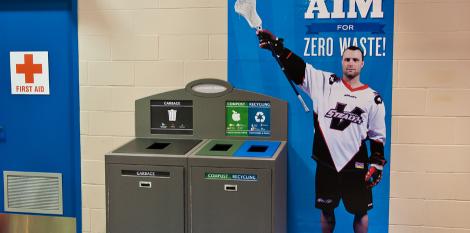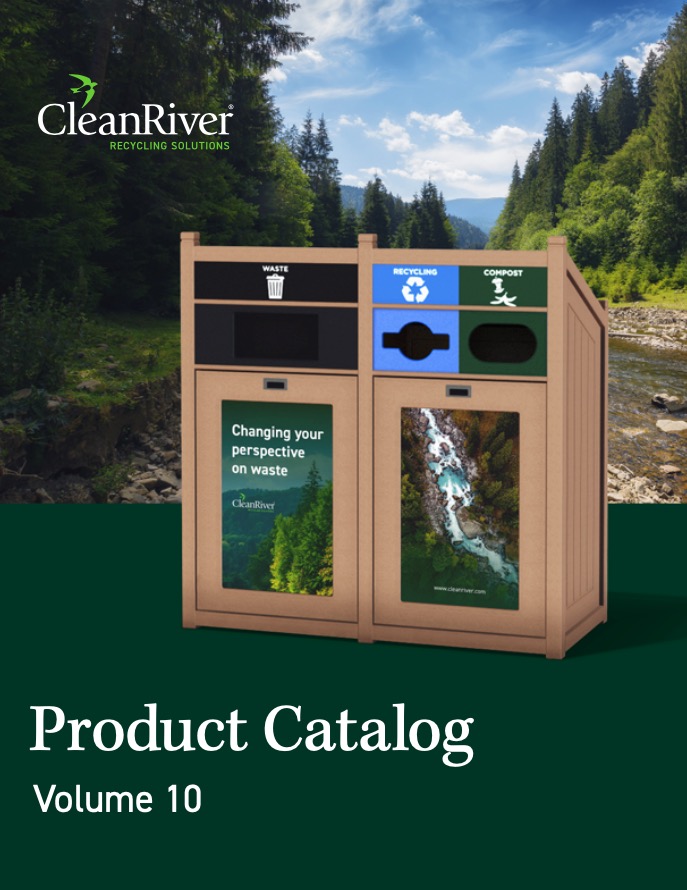Share
CleanRiver created the 3C process to empower organizations to increase the amount of waste they divert from landfill. It’s a set of best practices that enable you to implement a truly effective recycling program that goes way beyond the bin. The 3Cs stand for Culture, Communication and Collection.
In a recent study a high school in Toronto increased their diversion rate by 71% by implementing the CleanRiver 3C process.
Here’s why the CleanRiver 3C process can impact your recycling program:
Culture
Culture drives change. If you want to implement an effective recycling program everyone in the organization needs to be involved. Companies such as Wilfred Laurier University and the Langley Events Centre (LEC) in Vancouver all recognize that for effective zero waste programs to work culture has to be the driver. The LEC involved all key stakeholders at the planning stage of their zero waste program so that everyone would feel ownership in the program going forward.
CleanRiver’s CEO Bruce Buchan says “If senior management takes a position, it makes it easier to execute than when you hand the task off to other stakeholders. Transparency, advocacy and policy can make a huge impact on the success of a recycling program.”
Communication
A recycling program launch is critical so that employees and patrons know about the program and how it works. As part of their communication focus the LEC held training sessions for employees so that they knew what was recyclable and what was compostable, they could then coach fans and visitors at the facility on how to sort properly.
Graphics that clearly indicate different streams on the bins empower people in the 2-3 seconds they have to decide where they are going to toss their garbage. Facility-specific images help enhance the message. If the person sees the image of the salad container they are holding shown right above the blue recycling stream it makes it really easy for them to make the right choice.

Let everyone know how the program is doing, post the percentage of your waste that was diverted from landfill last month so people can see how their efforts are paying off. We also suggest that when you do waste audits you post images of the top 3 contaminants by the bins so that people become aware of something that should be recycled. For example if paper towels are found in the trash stream these should be either recycled or composted, so let everyone know that’s the case so they can choose more wisely next time.
Make sure you communicate everything about your program to stakeholders. If you collect all your recyclables in one stream because they are separated at your recycling center then you need to let everyone know that to avoid misconceptions. Many organizations are publicly accused of greenwashing via social media channels when consumers take photos of the contents of recycling containers.
Collection
Collection covers everything from the public areas known as front-of-house, to back of house which includes kitchens, meeting rooms and waste collection areas.
The first step here is to talk to your waste hauler about what streams they collect. For example do they require cans and bottles to be separated from paper? Do they collect organics for composting? When you have a full understanding of what will be collected you can then move ahead with confirming which streams you will collect within your facility.
Future-ready Transition containers that adapt to changing stream requirements are ideal because you only want to invest in containers once. Your program needs to easily incorporate changing waste mandates such as the Organics Disposal Ban in Metro Vancouver that comes into effect in 2015.
The next step is to determine the location of the containers in relation to the waste being generated. A school for example, is going to generate more recyclable and organic waste in the cafeteria than in the classrooms. In office environments recycled paper is most common near work stations, and organic collection is required in the meeting areas and lunch rooms.
The 3C process is applicable to all industries and all facilities no matter the size and number of employees. By keeping the 3Cs top of mind and applying them to your recycling program you will ensure that your recycling program continually evolves and improves so that you can achieve your diversion rate goals.
Call us today to increase your diversion rates with the 3C process at 1-888-646-4246 or email solutions@cleanriver.com

